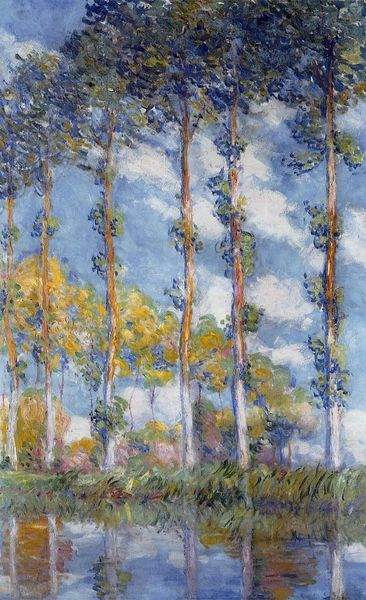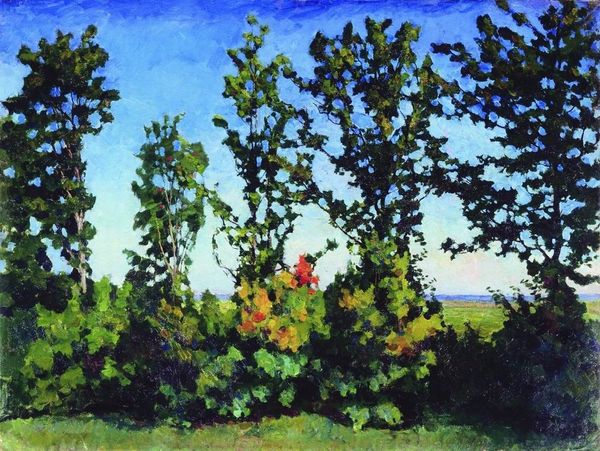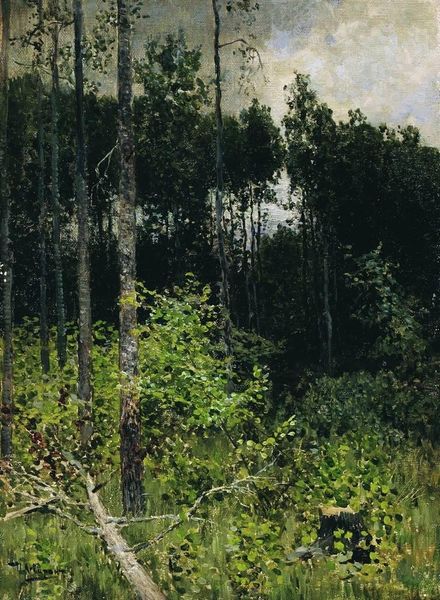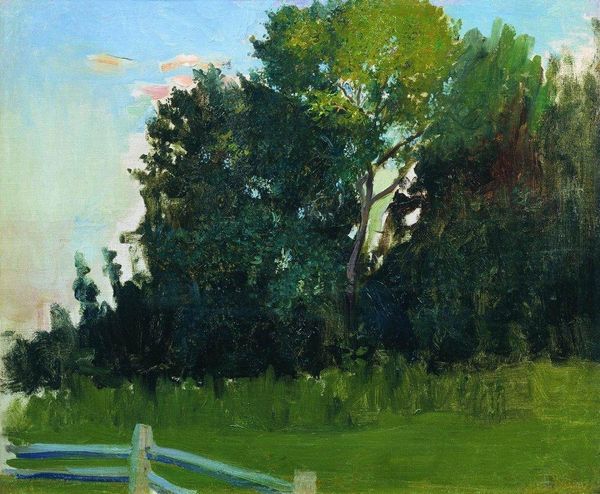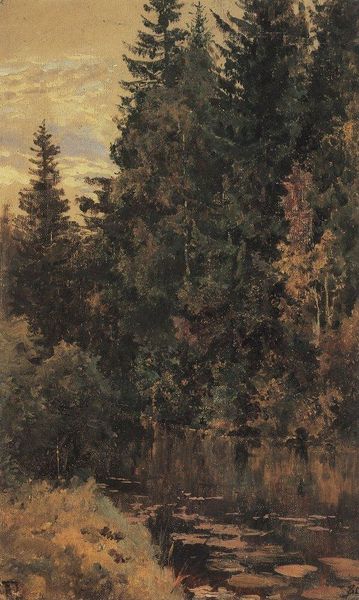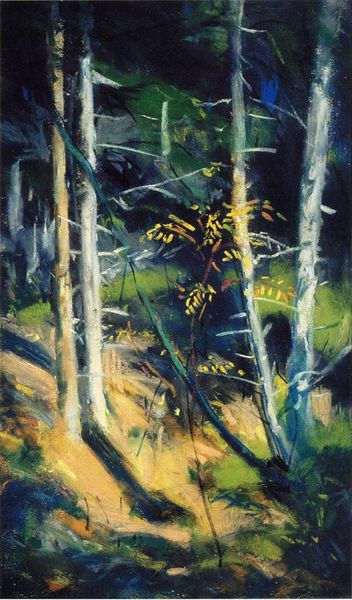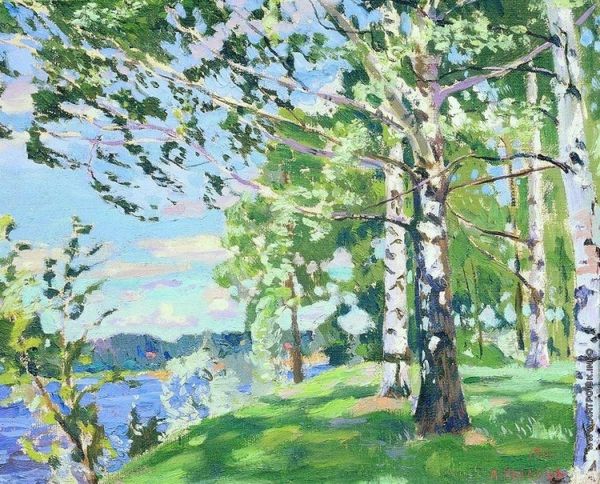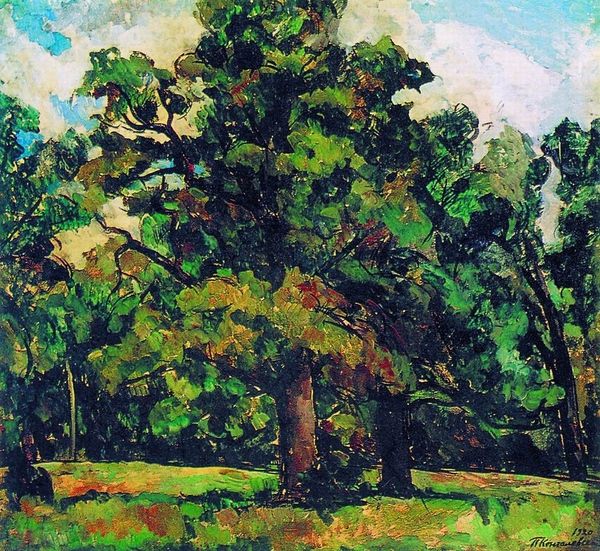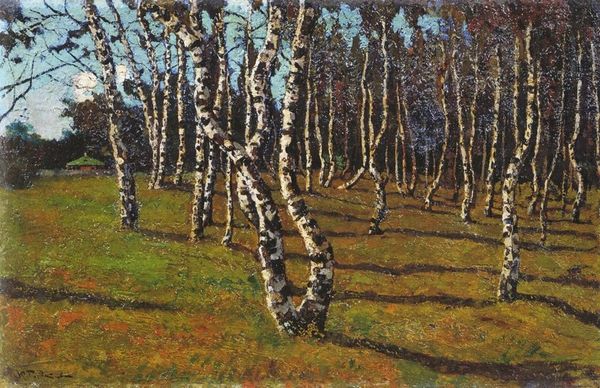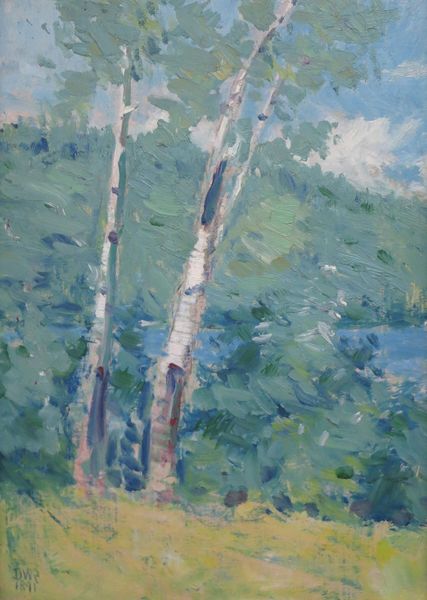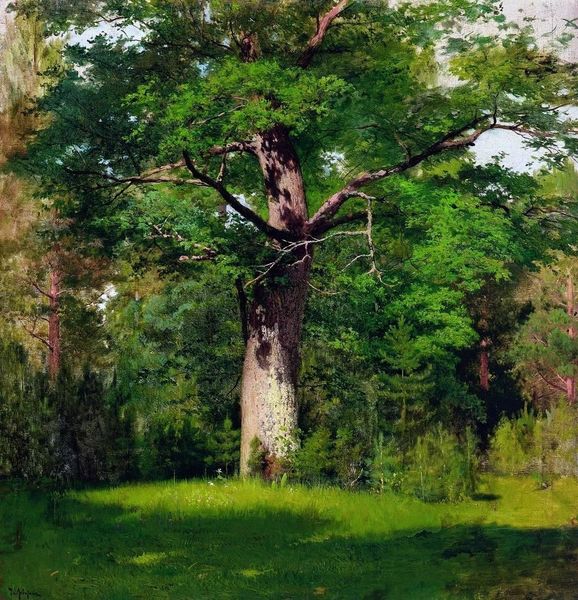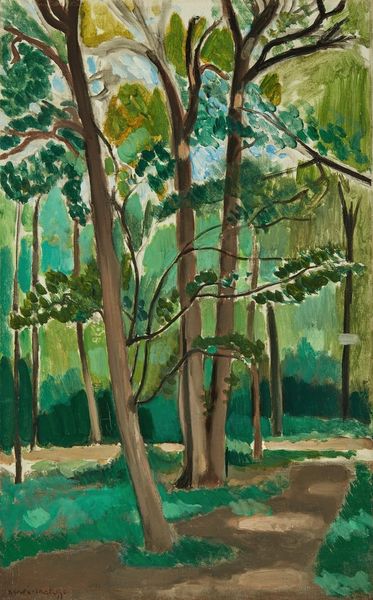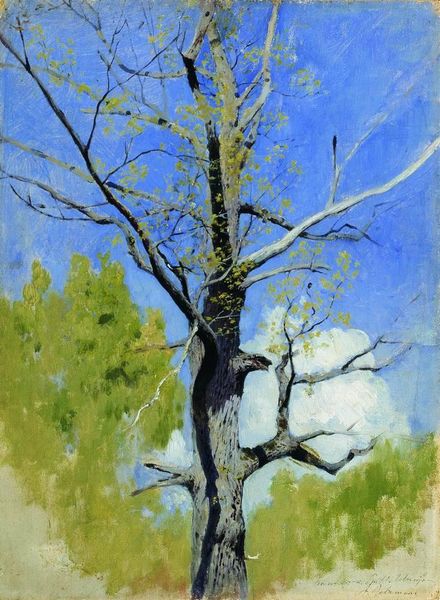
Copyright: Public domain
Editor: Here we have Arkhyp Kuindzhi’s "Pine," an oil painting from 1878. The color palette strikes me—this luminescent quality against the density of the foliage, what stands out to you? Curator: I'm drawn to how the artist manipulates light and shadow. Notice the verticality of the pine—how it dominates the composition, bisecting the picture plane. It isn't merely representational; it’s an exploration of form, line, and mass. The strategic placement of lighter tones against darker, almost claustrophobic greens creates a certain visual tension, wouldn't you agree? Editor: Absolutely. It’s almost as if the light itself is a tangible form, carved out within the canvas. The tree almost has a three dimensional feel to it. Can we consider the realism of it? Curator: Realism, of course, but also consider how the application of paint itself becomes a key element. The artist uses texture and contrast not simply to depict a pine tree but to examine the relationship between form and its environment. Are we looking at a window or is the window framing art, itself? Editor: Fascinating. It pushes beyond mere representation into a deeper, structural exploration. Curator: Precisely. Kuindzhi, in his rendering, isolates fundamental forms and contrasts the roughness of nature. The material reality of paint serves this function in and of itself. Editor: I now perceive a profound connection between technique and subject matter. Thank you. Curator: Indeed. Reflecting on the arrangement of mass and chroma, we can extract meaning beyond any mimetic function, appreciating how pure form communicates as clearly as any subject.
Comments
No comments
Be the first to comment and join the conversation on the ultimate creative platform.
